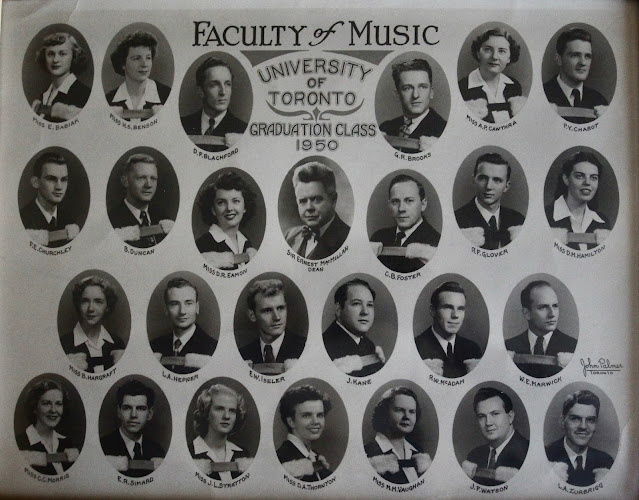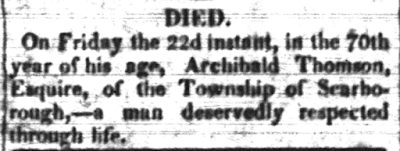On this day 70 years ago my father marched across the back campus into Convocation Hall and received his Bachelor of Music degree from the University of Toronto. His degree was much valued and hard fought for.
Russ' elementary years were spent at Hartman Jones memorial School on Carlaw Avenue in East York. He moved on to East York Collegiate where he completed grade 12 or Junior Matriculation in 1939. It was there that Russ' formal education came to a screeching halt. His dream had always been to study music at the University of Toronto. He had prepared for this by engaging in years of study at the the Royal Conservatory of Music. At the time the RCM was located at the corner of College Street and University Avenue in downtown Toronto.
 |
| Taken in March 1920, Toronto Public Library, Baldwin Collection |
Russ got his love of music from his mother Gertie who was an accomplished musician. He inherited her Heintzmann piano which still holds a place of honour in my mother’s home. Russ followed Gertie’s footsteps in becoming a skilled pianist. Unfortunately we do not have records of his achievements at the Conservatory but according to his was file he completed Grade Ten piano, Grade 4 Theory and the Teacher's Written examination qualifying for ATCM.
Post secondary education in music in Toronto at the time was coordinated by the Royal Conservatory of Music in conjunction with the University of Toronto, both headed by Sir Ernest McMillan. In 1946 the Faculty of Music intiated the MusBac, a 3 year school music program which would prepare students for teaching instrumental and vocal music at high school level. In its first year 21 students enrolled in the program. With help from the Department of Veteran's Affairs Russ began his studies in 1947. Students studied string, woodwinds and brass, conducting, choral music, music theory and history (Russ is on clarinet).
 |
University calendars had a lot of personal information back in the day. The full class is listed in the 1949-1950 Academic Division Calendar
Further information on Russ' studies was found in 1950 Torontonensis yearbook
Russ completed his degree in the spring of 1950. Convocation was held on October 27th 1950. My mom and grandparents attended
|
















